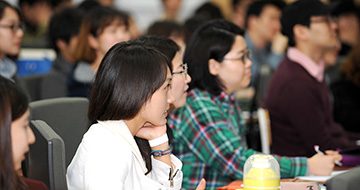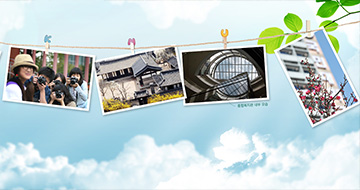Quick Menu 설정
※ 퀵메뉴 메뉴에 대한 사용자 설정을 위해 쿠키를 사용하고 있습니다. 메뉴 체크 후 저장을 한 경우 쿠키 저장에 동의한 것으로 간주됩니다.
국민인! 국민인!!
NASA화성탐사와 우주인 Risk Management연구 유럽SCI급 논문출판 / 데이비드 윌리엄 김(교양대학) 교수
- 작성자 박채원
- 작성일 23.11.21
- 조회수 434
오스트레일리아 시드니대학교에서 역사를 전공하고 영국 왕립역사학회(The Royal Historical Society, UK) 석학회원으로 활동하고 있는 교양대학 데이비드 윌리엄 김(David William Kim)교수는 우주과학과 인문학 융합분야 (Space Science and Humanities Integrated Section) 한국연구재단 장기 프로젝트의 일환으로 미항공우주국의 최신과학분야인 달 스테이션과 화성유인탐사에서 미제로 남아있는 Human Research Programs (HRP)에 관하여 최근 창의적 연구결과가 관련분야 (Astrobiology, Physiology, Psychology, Meditation, Spirituality, Health, Security, and Safety)의 미국과 유럽의 과학자, 기술자, 학자들에게 인정받아 스위스의 저명 SCIE 학술지(Aerospace)에서 출판하게 되었다.
아래는 원문의 (Psycho-Religious Experiences in Deep Space History: Astronaut’s Latent Countermeasures for Human Risk Management)의 일부 내용을 간략히 소개하고 있다:
Scientists and engineers proved that technology can send humans to the unknown space from the second half of the twentieth century. Since then, human movement has become a significant research subject for space exploration, including colonising projects for the Moon (2025) and Mars (2033). The astronaut candidates were strictly selected within the conditions of excellent aviation career and good physical health by assessment and selection through the Behavioral Health and Performance Group (BHP) for NASA. What about the psychological condition of the astronauts? How many astronauts would have a healthy mind before being appointed without internal wounds and a drug-, alcohol-, sexual-, or game-addiction background? … While the rescue missions of the Soyuz MS-23 spacecraft for the stranded ISS astronauts (Roscosmos cosmonauts Sergei Prokopyev and Dmitry Petelin and NASA astronaut Frank Rubio) are on their way (20 February 2023), this paper explores the nature of spirituality by examining the expressions of past astronauts. It argues the critical insight that when space science and technology fail in their general operation, the psychological countermeasures of humans are not incompatible with the role of religion, especially in the personal sphere of mind control from fear, horror, emotion, uncertainty, insecurity and hopelessness…
Figure 1. Buzz Aldrin holding communion elements in 1969, public domain.
The space life of astronauts is dissimilar to that of earthly people, but, according to a NASA 2004 report, their weekday is composed of 15 h and 30 min for mission tasks that they start from approximately 6 AM to 9:30 PM (Greenwich Mean Time). The daily schedule includes three mealtimes and 2.5 h of physical exercise to maintain muscle tone and fitness. They typically work 6.5 h, while 8.5 h are allotted for sleeping. The 24-h routine is filled up with the elements of work and sleep. They maintain a regular pattern of five and a half working days and 1.5 days off. Astronauts have private time or unofficial social gatherings on free evenings and weekends for the well-being of the space community. NASA also recognised the importance of the non-scientific sphere of personal recharge in the statement of human health that “Fun [time] is an essential ingredient to the quality of life”. How do astronauts spend their spare time before the next workday? On top of contacting family, watching movies, Netflix, hobbies (reading books), exergames, music, and extra sleep, what would they do? What about the religious devotion (reading scriptures, koinonia fellowship, listening to gospel songs, meditation (prayer), or seasonal celebrations: Easter and Christmas)? This paper, in terms of the study of the so-called “Antonovsky-salutogenesis”, attempted to prove a new insight that while the recreational activities are conducted in a sphere of individual welfare and physiological security, the sacred behaviour of astronauts, which cannot be proven via scientific data, increases the communal vitality, enjoyment, and hope for accomplishing a successful mission.
The Christian ethos of the space programme that began from Project Adam (the world’s first human-crewed spaceflight, in 1958, unfortunately not implemented) and Project Mercury (1958–1963), before the Apollo projects, was continued by William R. Lucas, the director of the Huntsville space centre, in the 1970s, as he was a lay reader in a Baptist Church and an invited speaker of the Billy Graham crusade. While the Chapel of astronauts was established in the same era, Jerry Klumas maintained that many professional members (staff, engineers and scientists) of the Kennedy Space Centre and the Johnson Space Centre were part of the NASA Christian community: “The Christian community at NASA is not a minority; it is very significant, and NASA people are outspoken about being Christians”. Bringing a Bible to space was repeated by Shannon Lucid, the daughter of missionaries on the Mirspace station, in 1996. Jonathan D. Cohen proved the legal perception that possessing personal religious items in space is not a violation of the Establishment Clause, which prohibits religious abuse of government and political control of religion. The tenets of the Free Exercise Clause protect the right of private religious displays in the personal space of the space community.
Figure 4. The Kazan Mother of God in the space station (Soyuz TMA–16) and Pope, public domain.
This paper was not about a philosophical approach of “space and human research” but hypothesised that as space-travel time exhibited a long-term prospect for Moon habitation projects (2025–2030) and the colonisation of Mars (2033–2040), the psychiatric well-being of astronauts should be considered at the top of the list for physical assistance with space medicine (drug and therapy). If past astronauts’ psycho-religious experiences (canonical texts, private services, casual fellowship (with therapeutic recreations), sacred music and meditation (prayer)) did not have a negative impact, it would be economical to regard the prosocial nature of personal spirituality alongside advanced entertainment systems (exergames within VR/AR), Netflix, (AI) pets and private hobbies (reading, simple sports, and drawing). An astronaut’s attitudes of positivity, confidence, assurance, and trust, that are the socio-cultural elements of religious psychiatry, should not be underestimated as a mental tonic for communal sustainability during long-term space exploration… For the full article published, see: https://www.mdpi.com/2226-4310/10/7/626
















